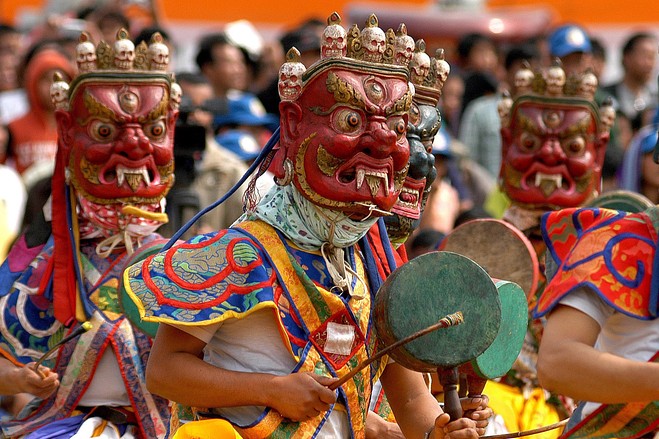Culture Of Arunachal Pradesh
Arunachal Pradesh is well known for its ancient culture. Known as the 'The Land of Dawnlit Mountains', Arunachal Pradesh finds mention in prominent scriptures of India, such as the Kalika Purana and Mahabharata. Sage Parashurama washed away his sins in Arunachal which was then known as Prabhu Mountains. Sage Vyasa meditated in the forests of this region and Lord Krishna married Rukmini at this legendary site of India.

The culture of Arunachal Pradesh is truly varied in the sense that the state has 26 major tribes including sub-tribes. Every tribe has their own unique set of traditions and customs. The major tribes of Arunachal are: Adi, Galo, Aka, Apatani, Nyishi, Tagins, Bori, and Bokar etc. The sun and the moon are the presiding deities of the major tribes who follow the Donyi-Polo religion (the name stands for sun and moon). The West Kameng and Tawang district are mainly inhabited by the Tibetan-influenced Monpa and Sherdukpen tribe. In Lohit district it is the Khampti and the Singpho tribe. All these four major tribes are followers of two different sects of Buddhism (Mahayana Hinayana). The other tribes are basically followers of ancient beliefs with animal worship being quite prominent amongst them.Arunachal Pradesh (/ɑːrəˌnɑːtʃəl prəˈdɛʃ/, lit. 'Land of Dawn-Lit Mountains') is a state in Northeast India. It was formed from the erstwhile North-East Frontier Agency (NEFA) region, and became a state on 20 February 1987. It borders the states of Assam and Nagaland to the south. It shares international borders with Bhutan in the west, Myanmar in the east, and a disputed border with China in the north at the McMahon Line. Itanagar is the state capital of Arunachal Pradesh. Arunachal Pradesh is the largest of the Seven Sister States of Northeast India by area. Arunachal Pradesh shares a 1,129 km border with China's Tibet Autonomous Region. As of the 2011 Census of India, Arunachal Pradesh has a population of 1,382,611 and an area of 83,743 square kilometres (32,333 sq mi). It is an ethnically diverse state, with predominantly Monpa people in the west, Tani people in the center, Mishmi and Tai people in the east, and Naga people in the southeast of the state. About 45 tribes/sub-tribes live in the state. The main tribe of the state is Adi, Nyshi, Galo, Tagin, Apatani, and so forth. The Mishmi tribe has three sub-tribes, namely Idu-Mishmi, Digaru-Mishmi and Miju-Mishmi.runachal Pradesh can be roughly divided into a set of semi-distinct cultural spheres, on the basis of tribal identity, language, religion and material culture: the Tibetic-speaking Monpa area bordering Bhutan in the west, the Tani area in the centre of the state, the Mishmi area to the east of the Tani area, the Tai/Singpho/Tangsa area bordering Myanmar, and the Naga area to the south, which also borders Myanmar. In between there are transition zones, such as the Aka/Hruso/Miji/Sherdukpen area, between the Tibetan Buddhist tribes and the animist Tani hill tribes. In addition, there are isolated peoples scattered throughout the state, such as the Sulung